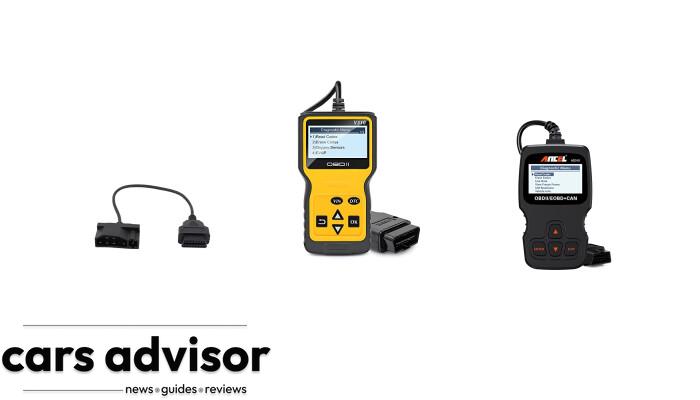Are you curious about the fuel efficiency of your vehicle and want to know if it has Active Fuel Management (AFM)? AFM is a cutting-edge technology commonly found in larger GM vehicles with V6 or V8 engines, designed to optimize engine performance while reducing fuel consumption.
In this blog post, we’ll help you understand what AFM is, how it works, and most importantly – how to tell if your vehicle has it. So buckle up and let’s dive into the world of advanced automotive engineering together!
TLDR
1. One way to determine if a vehicle has active fuel management is to check the Driver Informative Center (DIC) display on Chevy vehicles with V6 or V8 engines.
2. Another approach is to consult the owner’s manual of the car to determine if it has active fuel management.
3. The appearance of the valley cover can also indicate whether a vehicle has active fuel management – if it is smooth, the car likely has this technology.
4. Active Fuel Management (AFM) is a technology typically reserved for larger GM vehicles with V6 or V8 engines.
5. The AFM system can be identified by its components, including the Lifter Oil Manifold Assembly (LOMA) ribbed cover.
6. AFM is a cylinder deactivation technology that allows a V6 or V8 engine to switch between four-cylinder and eight-cylinder modes to optimize fuel efficiency.
7. AFM has been a popular engine technology employed in GM vehicles since it was introduced in the early 2000s.
8. Active Fuel Management is a trademarked name for the variable displacement technology developed by General Motors.
9. Some common search terms related to AFM include GM active fuel management VIN code, 5.3 AFM years, and how to tell if a Silverado has DFM.
10. It may be possible to determine if a specific 5.3 engine has cylinder deactivation by checking its production year, among other factors.
Understanding Active Fuel Management (AFM)
Active Fuel Management (AFM) is a technology that allows V6 or V8 engines to switch between four-cylinder and eight-cylinder modes, optimizing fuel efficiency without sacrificing engine performance.
What Is AFM?
Active Fuel Management (AFM) is a trademarked technology developed by General Motors to improve fuel efficiency in vehicles with V6 and V8 engines. At its core, AFM is a cylinder deactivation system that allows certain cylinders of an engine to be turned off during periods of low load or light driving conditions, such as cruising on the highway or idling in traffic. This ingenious technology enables the vehicle’s engine to switch between operating on all cylinders for maximum power and fewer cylinders for improved fuel economy.
For example, consider a Chevy Silverado equipped with AFM technology. When driven at high speeds or under heavy loads, the truck’s V8 engine would operate using all eight cylinders. However, when coasting down the highway at moderate speeds, four of those eight cylinders could be disabled temporarily through solenoid-activated lifters within the Lifter Oil Manifold Assembly (LOMA). Consequently, this change effectively transforms your powerful V8 into a more economical four-cylinder engine without compromising overall performance when needed. The result is greater fuel savings and reduced emissions without sacrificing capability – making Active Fuel Management both smart and eco-friendly automotive engineering solution since it first debuted in the early 2000s.
How Does It Work?
Active Fuel Management (AFM) is a technology that allows the vehicle’s engine to switch between four-cylinder and eight-cylinder modes depending on driving conditions, optimizing fuel efficiency. This process involves deactivating specific cylinders when they are not needed, reducing the amount of fuel consumed by the engine.
Solenoids inside the engine receive signals from the Electronic Control Module (ECM), telling them which cylinders to activate or deactivate. As a result, when driving at low speeds or when cruising on level terrain without much load, AFM can help improve fuel economy by up to 7%.
To illustrate how it works in practice, let’s say you’re driving your V6 or V8-powered car along a flat highway with no hills in sight. Your car’s ECM identifies that there isn’t much demand for power and decides to deactivate some cylinders using solenoids controlled under operational settings based on speed limits and other factors such as temperature readings.
The deactivated pistons will then stop moving up-and-down while still being connected via rocker arms to crankshafts – this reduces both fuel consumption and emissions since less gasoline is burned during these times. Once more power is demanded – for example if you need to accelerate – all cylinders are reactivated within milliseconds.
Overall, active fuel management technology helps make vehicles more efficient by reducing wasted energy requirements of an internal combustion engine running at full capacity all of the time. By switching off certain parts of an engine temporarily according to various parameters and priorities specified by engineers designing software programs related specifically towards powering engines through various conditions encountered while driving any given vehicle —all sorts benefit from improved performance!
What Kind Of Engines Implement AFM?
Active Fuel Management (AFM) is a technology that was first introduced by General Motors in the early 2000s. It was initially designed for larger vehicles with V6 or V8 engines but has since been implemented in smaller cars as well.
In essence, AFM systems allow an engine to switch between four-cylinder and eight-cylinder modes depending on driving conditions, which optimizes fuel efficiency. This means that any vehicle with a V6 or V8 engine made by General Motors after the introduction of AFM may have this technology incorporated into its design.
However, it’s worth noting that not all manufacturers use active fuel management – other companies may employ different technologies or simply rely on their engine designs to optimize fuel efficiency. If you’re unsure whether your vehicle has an AFM system, consult the owner’s manual and look for indications such as an AFM badge or sticker on the car’s exterior.
Additionally, you can check the valley cover appearance and Lifter Oil Manifold Assembly (LOMA) ribbed cover components under the hood to confirm if your car has cylinder deactivation technology like Active Fuel Management incorporated into it.
How To Determine If Your Vehicle Has Active Fuel Management
To determine if your vehicle has Active Fuel Management, you can: check the owner’s manual and manufacturer specifications; observe the driver informative center display; look for an AFM badge or sticker on the car; or check the engine code or VIN.
Check The Owner’s Manual And Manufacturer’s Specifications
To determine if your vehicle has Active Fuel Management (AFM), one of the easiest methods is to check the owner’s manual and manufacturer’s specifications. Here are some steps to follow:
- 1. Locate the owner’s manual – this can typically be found in the glove compartment or online through the manufacturer’s website.
- 2. Look for a section on engine specifications or technologies used in your vehicle.
- 3. Search for any mention of AFM, cylinder deactivation, or fuel-saving features.
- 4. Take note of any information provided, such as the specific model years or engine sizes that utilize AFM.
- 5. Compare this information with your vehicle’s specifications to confirm whether it has AFM technology installed.
Checking the owner’s manual and manufacturer’s specifications is a quick and reliable method for determining if your vehicle is equipped with Active Fuel Management technology. Keeping these documents handy can also help with future maintenance and repairs by providing valuable information about your car’s engine and systems.
Observe The Driver Informative Center
The Driver Informative Center (DIC) on Chevy vehicles is a dashboard display that provides the driver with important information about their car, including active fuel management status. If your vehicle has AFM technology, the DIC will show an “Eco” or “V4/V8” indicator when it is in four-cylinder mode. This means that your engine is currently running on fewer cylinders to save fuel.
To check if your car has active fuel management, you can observe this display while driving. If you see the Eco or V4/V8 indicator light up, then your car likely has AFM technology built-in. However, not all cars have this type of system installed and some may use different indicators to show its status.
Overall, checking the driver informative center adds another layer of confirmation when trying to determine whether a vehicle uses cylinder deactivation technology for improved fuel efficiency. Together with other methods like a consultation with owner’s manuals or observing the valley cover appearance as we’ve discussed earlier in this article, drivers can make sure they’re informed and are able to optimize their fuel economy using AFM if available in their automobile.
Look For An AFM Badge Or Sticker
Another way to tell if your vehicle has active fuel management is by looking for an AFM badge or sticker. This badge or sticker can usually be found on the trunk lid, tailgate, or engine cover of GM vehicles that utilize this technology. The badge may say “Active Fuel Management,” “Displacement on Demand,” or simply “AFM.”
Keep in mind that not all GM vehicles with V6 or V8 engines will have these badges or stickers, but it’s worth checking before ruling out the possibility of having AFM. If you don’t see a visible indicator on your car, refer to other methods such as consulting the owner’s manual and observing the driver informative center.
While having an AFM badge doesn’t necessarily guarantee that your car has active fuel management (since some cars may have had badges added aftermarket), it does provide a good starting point for determining whether this technology is present in your vehicle.
Check The Engine Code Or VIN
One foolproof way to determine if your vehicle is equipped with Active Fuel Management (AFM) technology is by checking the engine code or Vehicle Identification Number (VIN). By decoding these numbers, you can find out if the car has this system installed. One example is checking the VIN for a Chevy truck – if it starts with a “3,” then it likely has an AFM-equipped V6 engine, while a “7” indicates an AFM-equipped V8.
Another method to check the engine code is by looking at the eighth digit in some VINs. For example, on GM vehicles, an L83 code signifies that the car comes with AFM cylinder deactivation technology. If you’re not familiar with how to read these codes, consult your owner’s manual or contact the manufacturer’s customer service line for assistance in identifying whether your car contains active fuel management.
Taking these extra steps may help you ensure that your vehicle has all of its advertised features and maintain optimal fuel efficiency over time.
Pros And Cons Of Active Fuel Management
Active Fuel Management (AFM) can provide significant benefits such as improved fuel efficiency and reduced emissions, but it also has potential downsides like engine issues and costly repairs. Read on to learn more about whether AFM is the right choice for your vehicle!
Improved Fuel Efficiency And Reduced Emissions
One of the main benefits of active fuel management (AFM) is improved fuel efficiency, which can save drivers money at the gas pump. By deactivating cylinders when they are not needed, AFM allows a vehicle’s engine to operate more efficiently, resulting in better gas mileage. This can be especially helpful for larger vehicles with V6 or V8 engines that tend to have lower fuel economy ratings.
In addition to saving drivers money on gasoline, AFM also helps reduce emissions by burning less fuel overall. This means fewer harmful pollutants are released into the environment and contributes to cleaner air quality. With concerns growing about climate change and environmental sustainability, any technology that reduces emissions is valuable.
It’s worth noting that there are some potential downsides to AFM as well – such as potential engine issues and cost of repairs – but overall, it remains a popular choice for those looking to balance performance and fuel economy in their vehicles.
Potential Engine Issues And Cost Of Repairs
One potential downside of active fuel management (AFM) is the risk of engine issues and high repair costs. When a vehicle’s engine switches modes from four cylinders to eight cylinders, it puts added stress on certain components such as the lifter oil manifold assembly (LOMA). Over time, this can lead to wear and tear that may necessitate expensive repairs or replacements.
In addition, some drivers have reported issues with AFM causing their engines to consume more oil than normal. This can be due to increased pressure within the cylinders when they switch between modes, leading to higher rates of oil consumption. While not all vehicles with AFM experience this issue, it is important for drivers to monitor their oil levels and seek maintenance if they notice excessive consumption.
Overall, while AFM can provide significant fuel efficiency benefits for larger GM vehicles with V6 or V8 engines, it is important for drivers to weigh the potential engine issues and repair costs before deciding whether this technology is right for them. Regular maintenance and upkeep are crucial in preventing major damage down the line.
Is Active Fuel Management Right For You?
Consider factors such as your driving habits, the type and size of your vehicle, and other fuel-saving alternatives before deciding if Active Fuel Management is the right choice for you.
Factors To Consider
If you’re wondering whether active fuel management is right for you, there are several factors to consider before making a decision. These include:
- 1. Driving habits: If you spend most of your time driving on the highway or in rural areas with few stoplights, AFM may be more beneficial for you as it optimizes fuel efficiency during steady cruising.
- 2. Type of vehicle: AFM is typically offered in larger vehicles with V6 or V8 engines. If you own a smaller sedan or hybrid car, this technology may not be available or necessary.
- 3. Engine performance: While AFM can improve fuel efficiency, it may also affect the engine’s power and performance. Consider whether sacrificing some horsepower is worth the potential fuel savings.
- 4. Repair costs: If an issue arises with the AFM system, repairs can be costly. Consider whether you’re willing to take on this added expense if needed.
- 5. Fuel alternatives: There are other fuel-saving alternatives available such as hybrids and electric vehicles that offer even better fuel economy than AFM-equipped cars.
Keep these factors in mind when deciding whether to opt for a vehicle with active fuel management technology.
Other Fuel-saving Alternatives
While active fuel management can help improve a vehicle’s fuel efficiency, there are other alternatives to consider as well. One option is to reduce the weight of the vehicle by removing any unnecessary items or choosing lighter components when possible. Another way to save on fuel consumption is to practice good driving habits like accelerating gradually and avoiding sudden braking. Regular maintenance, such as keeping tires properly inflated and changing filters on time, can also contribute significantly to improving gas mileage.
In addition, hybrid and electric vehicles offer excellent fuel efficiency options that may be worth considering for those looking for greener choices. These vehicles use batteries in combination with gas or electric power, which reduces the amount of gasoline required while driving. Electric cars completely eliminate the need for gasoline altogether. While these options may require a higher upfront cost than traditional vehicles, they may end up saving drivers money in the long run due to their improved fuel economy.
Ultimately, choosing an alternative fuel-saving option depends on personal preferences and budget constraints. However, by doing proper research and making conscious efforts towards better driving practices and regular maintenance checks, everyone can do their part in reducing fuel consumption and helping protect our planet’s environment.
Conclusion
In conclusion, determining whether a vehicle has active fuel management is important for those looking to maximize their vehicle’s fuel efficiency. Checking the owner’s manual or manufacturer specifications, observing the driver informative center display, and examining the valley cover appearance are important steps to identifying if a car has AFM technology. While AFM can offer improved gas mileage and reduced emissions, it’s worth noting that there are potential issues with engine performance and higher repair costs associated with this technology.
When deciding if AFM is right for you, it’s essential to consider factors such as your specific driving habits and priorities, as well as assessing other available alternatives for reducing fuel consumption. Additionally, regular automotive maintenance such as ensuring proper ECM programming can help optimize engine efficiency regardless of whether your vehicle features AFM technology or not.
Ultimately, by understanding how to identify active fuel management in your vehicle and weighing its pros and cons against individual needs and preferences will allow drivers to make informed decisions when purchasing or maintaining their vehicles.





















